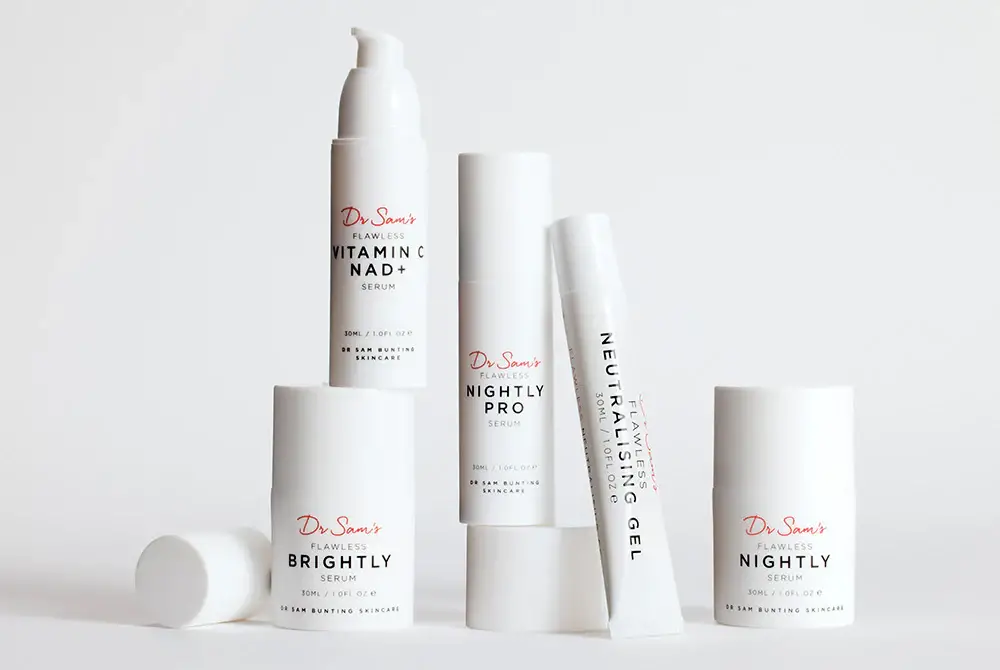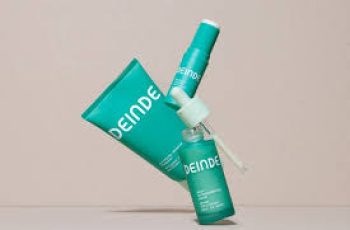
When it comes to effective skincare, two ingredients stand out for their powerful benefits: azelaic acid and L-ascorbic acid.
These names might sound complex, but chances are you’ve encountered them in your skincare products or heard about their impressive effects.
Azelaic acid is known for calming acne, reducing redness, and brightening uneven skin tones.
L-ascorbic acid, the pure form of vitamin C, is famous for boosting radiance, fighting environmental damage, and improving skin texture.
Many skincare lovers ask, can these two acids be used together safely?
This article explores the science behind azelaic acid and L-ascorbic acid, how they work, and how to combine them for best results without irritation.
Azelaic acid is a naturally occurring acid found in grains like barley, wheat, and rye. It’s also produced by the skin’s friendly bacteria in small amounts.
This acid is widely celebrated for its ability to treat various skin conditions, especially acne and rosacea.
Azelaic acid works by clearing pores of bacteria, reducing inflammation, and encouraging healthy skin cell turnover. This turnover helps fade dark spots and evens out skin tone over time.
It’s gentle yet effective, making it a popular choice for sensitive or acne-prone skin.
Many over-the-counter products contain azelaic acid, typically at 10% concentration, but prescription formulas with up to 15-20% are often recommended for faster or more dramatic results.
When starting azelaic acid, it’s important to introduce it slowly to avoid dryness, irritation, or peeling.
L-ascorbic acid is a potent antioxidant form of vitamin C that is widely regarded as a skincare superstar.
It helps neutralize free radicals caused by UV light, pollution, and other environmental aggressors that accelerate skin aging.
Vitamin C stimulates collagen production, which reduces the appearance of fine lines and wrinkles and improves skin elasticity.
L-ascorbic acid also brightens dull skin and fades hyperpigmentation by inhibiting melanin synthesis.
Because of these benefits, it’s a staple ingredient in many serums and creams aimed at anti-aging and skin brightening.
However, L-ascorbic acid is sensitive to light and air, so it needs to be formulated carefully to maintain stability.
Using vitamin C regularly can give your skin a radiant, glowing look while protecting it from future damage.
While azelaic acid and L-ascorbic acid each have strong individual benefits, the question remains: can they be used together safely and effectively? The good news is yes, but with some caveats.
Both ingredients are acidic, with relatively low pH levels, which means they can potentially irritate the skin if combined improperly.
Applying both at the same time without proper spacing may cause redness, stinging, or dryness. Moreover, their acidic pH can interfere with each other’s effectiveness if layered too closely.
To get the maximum benefit from each, it’s crucial to follow strategies that respect your skin’s tolerance and pH balance.
One common and effective method is to apply these acids at different times of the day. For example, many skincare experts recommend using L-ascorbic acid in the morning.
This is because vitamin C provides antioxidant protection against daily environmental stressors, while also brightening and giving a luminous finish under makeup or sunscreen.
Azelaic acid can then be applied in the evening to help with overnight skin renewal, calming inflammation, and reducing acne breakouts.
Using them at separate times minimizes irritation risk and ensures both ingredients perform optimally.
Another useful approach is to allow a waiting period of about 15 minutes between applying one acid and then the other.
This gap helps your skin’s pH return closer to normal, reducing the chance of irritation and allowing each ingredient to absorb properly.
For example, if you apply your L-ascorbic acid serum first, wait 15 minutes before applying azelaic acid.
This method is especially helpful if you prefer to keep both acids in the same part of your routine, such as your morning skincare ritual.
Remember that patience is key here — rushing to layer multiple acids at once may do more harm than good.
If you prefer to use both acids in your morning routine, another option is to alternate days.
For instance, use L-ascorbic acid on Monday, Wednesday, and Friday, and apply azelaic acid on Tuesday, Thursday, and Saturday.
This rotation keeps your skin from being overloaded by too many acids at once, while still allowing you to enjoy the benefits of both ingredients regularly.
However, because both acids can increase photosensitivity, using a broad-spectrum sunscreen with SPF 30 or higher daily is essential.
Even on cloudy or rainy days, sun protection helps prevent damage and pigmentation caused by UV rays.
While it is technically safe to apply azelaic acid and vitamin C simultaneously, many skincare experts advise against it due to the risk of irritation and reduced effectiveness.
Skin’s natural pH level is roughly 4.7, but both azelaic acid and L-ascorbic acid formulations are usually more acidic, with pH values between 3 and 4.
When you mix two acids with similar low pH levels too closely, they can disrupt each other’s function.
This disruption can cause one or both products to lose potency and potentially lead to skin redness, itching, or discomfort.
Before adding any new active ingredient like azelaic acid or vitamin C to your skincare routine, performing a patch test is highly recommended.
Apply a small amount of the product on the inside of your forearm or behind your ear, and wait 24 hours to check for any adverse reactions.
If you notice redness, itching, or irritation, avoid using that product or consult a dermatologist for personalized advice.
Patch testing is a simple but effective way to protect your skin from unexpected sensitivities.
For those new to acids, start slowly and gradually increase frequency. Introduce one acid at a time to observe how your skin responds before layering or combining them.
This helps minimize the risk of irritation and allows your skin barrier to adjust.
Using moisturizers with soothing ingredients like ceramides, niacinamide, or hyaluronic acid can also support skin health when using active acids.
Hydration and barrier repair are crucial, especially when using potent ingredients like azelaic acid and L-ascorbic acid.
If you experience any irritation, redness, or peeling while using these acids, reduce application frequency or pause their use until your skin recovers.
Sometimes it’s helpful to consult a dermatologist who can guide you on the best formulations and concentrations for your skin type and concerns.
Prescription-strength azelaic acid products might offer better results but can be harsher on the skin, so professional advice is valuable.
In addition to using azelaic acid and L-ascorbic acid together safely, remember to keep your skincare routine balanced and simple.
Avoid layering too many potent acids or exfoliants at once, which can compromise your skin barrier.
Consistent use of gentle cleansers, hydrating moisturizers, and broad-spectrum sunscreen supports the benefits of these active ingredients and helps maintain healthy, glowing skin.
Both azelaic acid and L-ascorbic acid offer unique benefits that complement each other well.
Azelaic acid excels in reducing acne, calming inflammation, and lightening dark spots, while L-ascorbic acid provides powerful antioxidant protection, collagen stimulation, and brightening effects.
When used correctly, these ingredients can transform dull, uneven, or acne-prone skin into a clearer, more radiant complexion.
If you want to dive deeper into either azelaic acid or L-ascorbic acid, there are plenty of in-depth resources and blog posts dedicated to explaining how they work, ideal formulations, and tips for beginners.
Exploring these topics can help you feel confident and informed about choosing the best products for your skin.
Lastly, if you have questions or want personalized skincare advice, many brands and skincare experts are available on social media platforms.
Following trusted sources like Procoal on Instagram gives you access to professionals who can answer your queries directly.
Engaging with a skincare community helps you stay updated on the latest trends and learn tips for managing your skin safely.
In conclusion, azelaic acid and L-ascorbic acid can absolutely be part of the same skincare routine when used thoughtfully.
Space out their applications, alternate usage times or days, and always protect your skin with sunscreen.
With patience and care, these two powerhouse ingredients can work together to improve your skin’s clarity, brightness, and overall health.
Your skin deserves the best, and understanding how to use these acids properly is a key step to achieving that glowing complexion.


